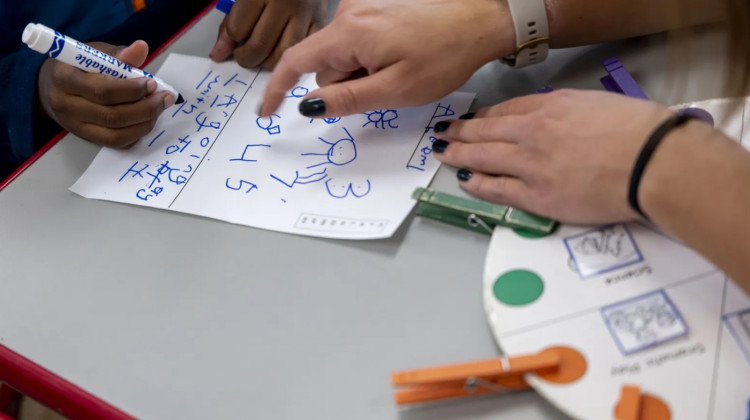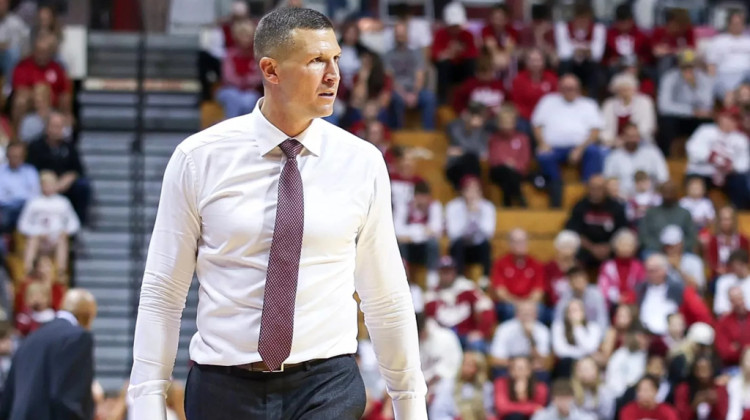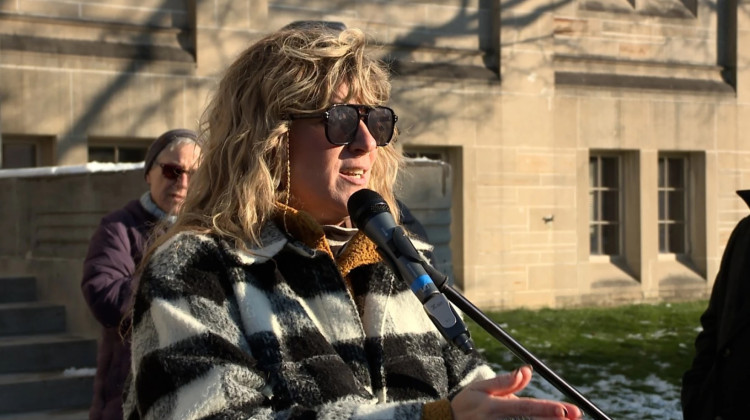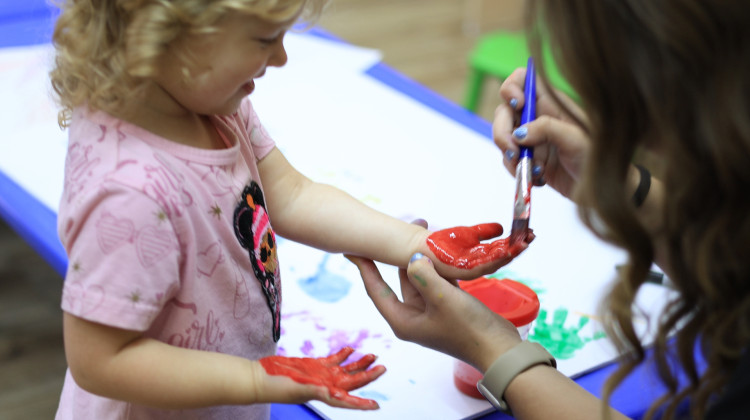
Preschool enrollment in Indianapolis Public Schools rose to 795 students in the 2021-22 school year as schools have stayed open, and staples of preschool programming returned.
Carl Glenn Payne II for ChalkbeatBefore the pandemic, virtual preschool was practically unheard of at Indianapolis Public Schools. These days, it’s not uncommon for a 4-year-old preschooler to jump on a video call.
“They take their iPads home every day just in case,” said Kathy Herald, director of early learning. “With the fear of COVID, we had to constantly be ready to pivot.”
COVID has changed the daily routine for both preschoolers and preschools at IPS. It has also created uncertainty for program funding, as federal funding for disadvantaged students — known as Title I, the single biggest category of regular K-12 education aid from Washington — shrank.
Title I funding is based on several factors, and takes into account census data about children ages 5 to 17 who live within a district’s boundaries, such as whether they are from low-income households or in foster care. There are roughly 50,000 such school-age children who live within IPS boundaries, and roughly 30,000 attend IPS and its innovation network schools.
The district has allocated over 8 percent of its total federal Elementary and Secondary School Emergency Relief (ESSER) funding — $17.9 million out of $213.5 million — to shielding preschool staff and classrooms from cuts. But with an expiration date for spending those limited dollars, officials are considering whether they should count on a rebound in regular federal funding, or actively seek out another source of revenue to fill the gap, like preschool tuition.
Most recent enrollment trends show a slow rebound in preschool enrollment, both nationally and at IPS, indicating that demand is recovering. But IPS’ K-12 enrollment, which determines a large share of the funding for the program, has continued to decline.
IPS rolled out preschool in 2013 in an ambitious plan to offer early learning for 4-year-olds, long before the state caught up to the idea.
Nearly a decade on, the district enrolls around 800 preschool students at a cost of around $5.5 million per year, $750,000 of which comes from Title I funds. Prior to ESSER being available, Title I funded over $3 million of the annual cost. Preschool is free to families and typically runs from 9 a.m. to 4 p.m.
A total of 29 classrooms spread across 24 sites are open to all students, while another 14 are developmental classrooms for students who receive special education services. The district also receives $3,150 from the state for every student in developmental preschool.
The purpose is to give young students a strong foundation in soft skills that are critical to later academic success, said Herald. It’s also an early boost that the district hopes keeps students from needing costly interventions in elementary school.
“It’s not our goal for students to identify every letter of the alphabet or count to 30,” Herald said. “Our goal at the end of preschool is to be able to sit and listen to a story, talk about what they heard, ask questions, and to appropriately interact with their schoolmates.”
“Kindergarten teachers have time to support that but not to teach it directly,” she added. “Preschool gives us that opportunity.”
When preschools closed at the beginning of the pandemic, the district’s youngest students checked in with their teachers by phone, Herald said. In the fall of 2020, schools sent home iPads, books, and bags of craft supplies for students to do virtual lessons at home.
But such efforts didn’t stem a decline in students. Enrollment dropped from a peak of 930 students in 2018-2019 to 648 in 2020-2021 — the year that IPS schools started virtually.
The district closed three preschool classrooms after a drop in enrollment, consolidating classes at those sites.
Meanwhile, Title I funding sank from $24.7 million in 2019 to $16.4 million in 2021. That decline led the district to allocate the $17.9 million in emergency funding to prevent preschools from cutting staff and closing more classrooms, said Weston Young, the district’s chief financial officer. Though enrollment dropped, there were still students in preschool classrooms who would have lost out on services otherwise.
Now, officials are evaluating if the district’s smaller amount of regular federal aid in the form of Title I represents the new norm.
If the latter is the case, the district may need to look into new funding streams for preschool after ESSER dollars expire in 2024, Young said. One option would be to offer preschool through the state-funded On-My-Way Pre-K, which provides early learning grants to eligible families. This could be supplemented by a private pay option for families who don’t qualify for On-My-Way Pre-K, he said.
“That’s where we are right now: figuring out who’s showing up, who’s coming back, and what are the needs that exist,” he said.
Nationwide, preschool enrollment rebounded slightly this year after dropping off dramatically early in the pandemic, said Steve Barnett, senior co-director at the National Institute for Early Education Research.
Factors that will influence next year’s enrollment include the availability of vaccines for children under 5; infection rates in schools; the demands of in-person work; and parents’ worries about their children’s social and emotional development.
Staffing shortages may be another barrier to reopening classrooms, Barnett said, but this may be less of a problem for programs that have been kept fully funded during the pandemic.
“There are reports that staffing shortages may be affecting reopening all classrooms but this may be less of a problem for programs that states kept fully funded,” Barnett said.
This year, schools have stayed open, Herald said, and staples of preschool programming have returned. Students can take turns with cloth puppets to act out scenes of empathy, and learn words and facial expressions without masks. Students in special education can spend time in general education classrooms again.
Preschool enrollment has risen to 795 students in the 2021-22 school year amid growing demand, according to Department of Education data. And Herald said she’s optimistic about the program’s trajectory.
“If you open a classroom it will be filled,” Herald said. “We may not start full on July 30, but we will be full on August 30 as program awareness grows and people come back from vacations.”
Correction: June 16, 2021: A previous version of this story attributed the decline in Title I funding to a decline in IPS enrollment. The decline in Title I aid is due to changes in demographic data about school-age children within the district’s boundaries.
Aleksandra Appleton covers Indiana education policy and writes about K-12 schools across the state. Contact her at aappleton@chalkbeat.org.
Chalkbeat is a nonprofit news site covering educational change in public schools.
 DONATE
DONATE






 Support WFYI. We can't do it without you.
Support WFYI. We can't do it without you.